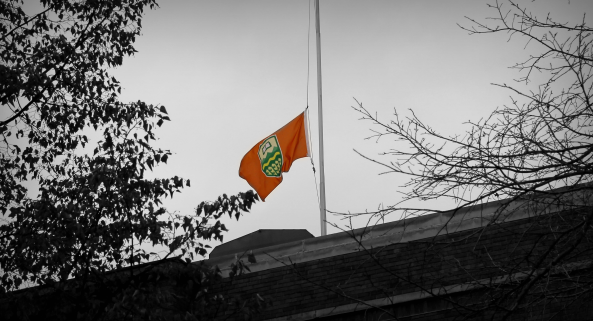
There are four times of the year that remind me about the importance of what I do here at the university - March 23rd, April 28, 1st full week in May and August 18th.
In a previous life I was the Manager of Occupational Health and Safety at the City of London, in Southwestern Ontario. On March 23, 1996 at 11:25 a.m. I received a call from a colleague, David Howard. It was a Saturday and I was just heading out the door to visit some friends. David's call was important. He said, "Andrew, there's been an explosion at the Silverwoods Arena and one of our staff has been seriously hurt…."
The employee's name was Tim Hickman, a young man of almost 21 years of age. He had been working at the arena driving the ice resurfacer and helping the customers enjoy the facility. He had swapped a shift so he could have his birthday off on the Monday to celebrate with some friends. Instead of a night of celebration, Tim was in intensive care in a London hospital. A few weeks later Tim passed away from respiratory failure as a result of severe burns to his head and upper body. As the lead investigator I know why and how Tim died from this workplace incident. I know how his accident could have been prevented and how community arenas can be made safer for workers and the public. I also know how the loss can affect a family, friends and co-workers.
Tim's mom, Shirley has gone on to lead Threads of Life a not for profit organization mandated to help families cope through these tragic events. In my journeys in safety, Shirley has become a good friend and partner.
In Canada, April 28th is recognized by the federal government and workplace communities as the National Day of Mourning for Persons Killed and Injured at Work. It is a solemn day of reflection for the almost 900 Canadians who are killed and the hundreds of thousands who are injured or become ill as a result of their work. On April 28th, we honour their memory and reflect on the possibilities lost to their families and communities. We also commit ourselves to positive actions to protect ourselves and our colleagues as we pursue our work.
The Day of Mourning is a uniquely Canadian invention. It has been adopted by countries around the globe. The International Labour Organization has adopted the date and has focused it toward making a difference in the world of work. April 28th is also called World Day for Safety and Health at Work. This year's theme is, "Optimize the collection and use of OSH data." Its focus is on using experiential injury, illness and safety data to drive understanding and action to foster the conditions for success at work.
North American Occupational Safety and Health (NAOSH) Week is celebrated in the first full week of May. It begins with a charity walk called Steps for Life on the Saturday before the week. EHS has entered a team in the May 6th event in Rundle Park and will be raising funds in support of Threads of Life. EHS has quite a few other initiatives planned for NAOSH Week to reflect on our past practices and future opportunities in safety and health and the U of A. More information on NAOSH Week activities at the U of A can be found on the EHS website.
Finally, an important date for us here at the university is August 18. On this day in 2011, one of our field research colleagues, Suzanne Abele, was killed in an all-terrain vehicle accident doing the work she loved. Suzanne, the field supervisor working in the Renewable Resources Department of ALES, did all she could to prepare her colleagues for the challenging conditions in their field work that day. Little did she know that a hard to see, washed out section of the forestry road would meet her that day. The washout had been identified by a a number of individuals, but the message hadn't gotten to all the other users of the road in time for them to be on the lookout. Hindsight offers a clear view of a challenge that at the time was known by some but unknown by the one person who would come across the road that day. The direct cause is obvious. The conditions allowing the washout to be unidentified and not fully communicated were not. Very often the systems of hazard recognition and control are powered by an unknowable potential for harm that becomes known when the tragedy occurs. Our role is to train our foresight to predict hazards, evaluate risk and act in accordance with our best judgement.
Suzanne's passing was the second work fatality that I would investigate in my career. It does not get easier with experience. I'm comforted with the knowledge that on the majority of days we use our intellect, intuition and skill to work safely. As time goes on, and as we learn, we rely less on luck and more on well executed planning to get the learning and research results we are known for.
For me, these four times of the year are bittersweet. March 23rd, April 28th, NAOSH Week and August 18th are sign posts on my journey in safety. They remind me of the solemn reality of life and the potential for harm that hounds us every day. They also remind me that on most days we safely uplift the whole people; changing the world for the better.

Andrew Cooper - System Planning & Development Lead, Environment, Health & Safety
Andrew Cooper is the System Planning & Development Lead with Environment, Health & Safety. He's been with EHS for seven years and is past president of the Canadian Society of Safety Engineering (CSSE). Andrew leads a diverse team of experts tasked with advancing research and learning through the protection of people and the environment.